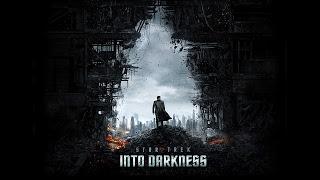 Retrieved from http://www.hdwallpapers.in/star_trek_into_darkness-wallpapers.html
Retrieved from http://www.hdwallpapers.in/star_trek_into_darkness-wallpapers.htmlOne of the major issues in entertainment has always been the argument between integrity and profitability. Musicians and actors are frequently accused of “selling out” when they make commercially successful products. However, stubbornly clinging to that integrity can hold an artist back from success. It’s a fine line to walk, to create honest, meaningful work that is still accessible to the audience and popular enough to make a profit.
An article I read on io9 titled “How to Write for Money Without Selling Out Too Much” was sparked by some recent Twitter conversations between writers. The discussion included
several different authors with opposing beliefs on whether artists should only create work for themselves, or try to influence and reach a larger audience. Some authors believed there was no point in writing if you couldn’t write whatever you wanted. Others believed that broadening the appeal of your work for the audience wouldn’t necessarily make it bad, but could actually improve it. Another author quoted satirist George Saunders with, “I can't change who I am and what I do, but maybe there's a way to reach those good and dedicated readers that the first few books might not have appealed to.” The article didn’t try to determine which side was right or wrong, and neither will I. It did, however, claim that to some degree, any time an author is writing for money they are compromising their work. The question is whether those compromises are based on artistic choices or financial. I feel like that is a choice every artist must make for themselves.Another issue of integrity could be applied to the way art is commercialized with merchandising and advertising. Movies are no longer considered or judged solely on their quality. Before a big summer blockbuster is released, we are inundated with media and merchandise tie-ins to promote the film. Every time a new Marvel movie is released, we get Dr. Pepper commercials featuring the hero. The last Batman film advertised on Mountain Dew cans. I recently saw that, with the next Star Trek Into Darkness movie, a new app will be launching that is unprecedented in blending real world advertising with the fantasy world of the film. While including the obvious features of special offers, and content like video and wallpapers, the app will also contain image and audio scan functions that can interact with other media, and geo-location to include a consumer’s actual location in mission games. I’m starting to feel that art is almost indistinguishable from commerce these days.
